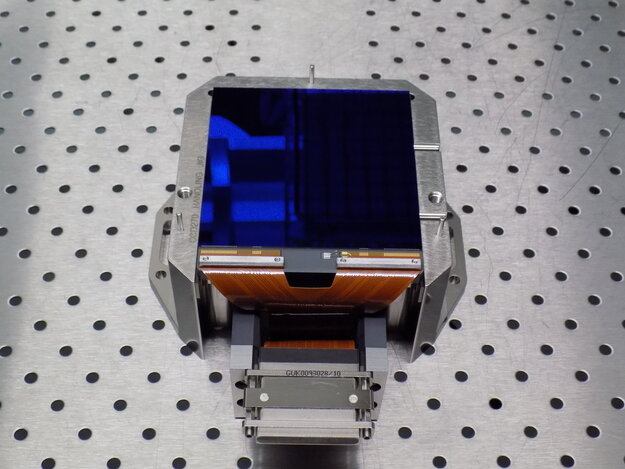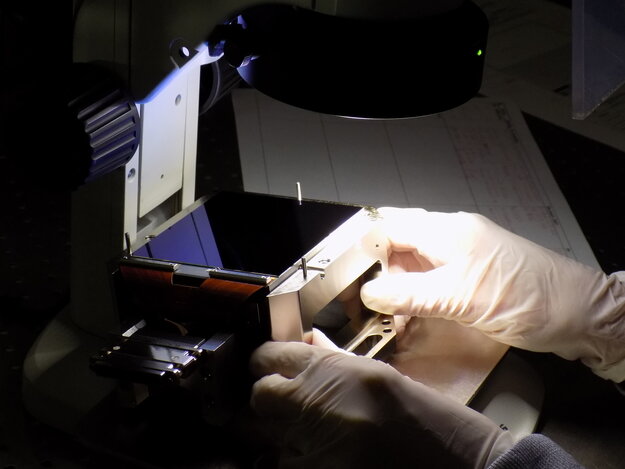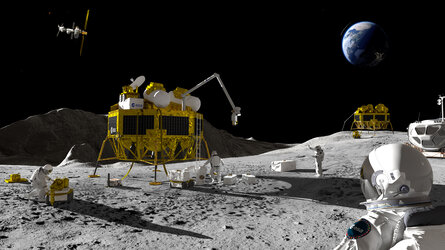Plato’s cameras
In the search for Earth-like planets orbiting bright stars in the Universe, ESA’s Plato mission needs to look at a large patch of the sky for a long time using a sensitive camera.
Optimising both the field of view and the sensitivity of this space telescope was a real challenge, but engineers thought of an imaginative design. Instead of using one very large mirror, Plato uses a total of 26 cameras that combine their observations. This design works like that of insects’ compound eyes, where many ‘cameras’ are placed at an angle to increase the field of view.

Plato has two types of cameras: a group of 24 normal cameras for observations and a set of two fast cameras for bright stars, fine guidance and navigation. Cameras of both types have four CCD detectors that each produce an image of 20 megapixels. Each CCD measures approximately eight by eight centimetres and will operate at a temperature lower than -65°C for optimal sensitivity.
These detectors will be able to spot any slight dimming or brightening of a star when a planet transits – pass in front of the star from our point of view. Small Earth-like planets around Sun-like stars are extremely difficult to find because of their small size, larger distance from their star and great distance from Earth.
24 normal cameras

Plato’s 24 normal cameras acquire images every 25 seconds and have a field of view of 1037 square degrees. However, they have been grouped into four sets, each set pointing outward at a 9.2-degree angle allowing for a larger total field of view of 2232 square degrees. This means that about 5% of the whole sky is observed simultaneously by Plato.
The high-quality images of this large area contain data on a lot of stars but also the space in between stars. It is not possible to downlink all of the data back to Earth. Instead, per target star a smaller image of six by six pixels around the star, called an imagette, is sent down. That is enough pixels to capture planets transiting the star.
Two fast cameras

The fast cameras have a ten-fold higher cadence than the normal ones, with an image being captured every 2.5 seconds. Fast cameras are only capable of detecting bright stars but are very useful for navigation. One fast camera has a red filter and one has a blue filter. This provides some colour information in the observations, which will be useful for scientific analysis. For example, it will help distinguish between starlight reflected off of the exoplanet surface and emission from the exoplanet itself. Additionally, measurements in two wavelength bands allow for a first indication of the kind of particles present in their atmospheres.















 Germany
Germany
 Austria
Austria
 Belgium
Belgium
 Denmark
Denmark
 Spain
Spain
 Estonia
Estonia
 Finland
Finland
 France
France
 Greece
Greece
 Hungary
Hungary
 Ireland
Ireland
 Italy
Italy
 Luxembourg
Luxembourg
 Norway
Norway
 The Netherlands
The Netherlands
 Poland
Poland
 Portugal
Portugal
 Czechia
Czechia
 Romania
Romania
 United Kingdom
United Kingdom
 Slovenia
Slovenia
 Sweden
Sweden
 Switzerland
Switzerland


























